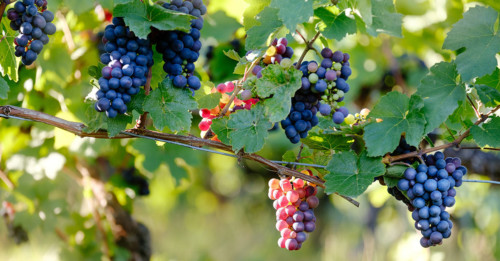Pinot Noir is the most romanticized red wine in the world. No other grape inspires such emotion and worship among wine enthusiasts. Festivals are thrown every year in the grape’s honor and an entire movie, Sideways, highlighted the fervor of its fans and helped boost the variety’s popularity.
Looking for a bottle to drink? Check out our regularly updated list of the best Pinot Noir bottles!
Pinot Noir In 60 Seconds:
- Pinot Noir is a thin-skinned grape variety that is native to Burgundy, France.
- Pinot Noir wines are light to medium body and range in style from light and fruity to complex with aging capability.
- Pinot Noir is produced around the world despite being notoriously difficult to grow.
- In France, Pinot Noir is labelled by the region in which it is grown, like Burgundy (or Bourgogne). It is also a key variety in Champagne.
The Origins of Pinot Noir
Pinot Noir is native to the Burgundy region of France, and it’s there where the world’s most prized bottles are still produced. As is customary in France, producers do not label their bottles with the name of the grape variety and instead list the region, in this case Burgundy. Burgundian Pinot Noir has flavors of ripe red berries, sweet black cherries, mushrooms, and “forest floor,” a descriptor sommeliers use in reference to the smell of damp, fallen leaves.
Why Pinot Noir Is Difficult to Make
Pinot Noir is susceptible to several viticulture hazards, like rot, because it grows in tightly packed clusters and has a thin skin. The tight bunches limit airflow between the grapes and can also promote uneven ripening, while the variety’s thin skin makes it more suitable to cool climates. In moderate to warm areas, canopy management is crucial to protect against sunburn.
Pinot Noir From Other Areas of France
Outside of Burgundy, Pinot Noir is grown in several areas of France. In Champagne, it is one of the three most commonly grown grapes of the region’s seven permitted varieties. Pinot Noir increases the structure and character of brut blends, and is also used as the main variety in Blancs de Noir wines (white sparkling wine made exclusively with red grapes). Pinot Noir is also grown in the Loire Valley, where it appears in red or rosé Sancerre, and is the only red grape permitted in Alsace.
Notable Pinot Noir Growing Regions Around the World
In the United States, both California and Oregon produce exceptional and elegant Pinot Noir. In Sonoma, the cool and foggy Russian River Valley accounts for one-fifth of the state’s plantings. Oregon’s Willamette Valley sits on the same latitude as Burgundy and enjoys a similar climate plus cooling breezes from the Pacific Ocean, making it the perfect spot for Pinot Noir.
Elsewhere, Pinot Noir is the most planted red grape in Germany where it’s labelled Spätburgunder and responds well to barrel aging. Pinot Noir is also the flagship red variety in New Zealand where it produces vibrant, fruit-focused expressions. In recent years, producers in Chile have found that Pinot Noir is well suited to cool sub-regions like Casablanca and Bio Bio. Styles can vary from earthy and old-world to plush and fruity, which is more typical of a New-World expression.
Pinot Noir as Rosé
While pale pink blends dominate the rosé market, especially those from Provence. Producers are increasingly embracing Pinot Noir for dry, varietal rosé wines. Pinot Noir’s delicate character makes it an ideal candidate for the style and is well suited to minimal skin contact winemaking. Rosé made with Pinot Noir has bright acidity, with crisp flavors of strawberry, watermelon, and pomegranate.
How To Pair Pinot Noir With Food
Pinot Noir’s light body, complex structure, and elegant tannins make it a great wine to pair with all types of food. For fruit-forward versions — those that typically come from warmer climates — opt for fatty fish or seafood like scallops, lobster, or shrimp. Pinot Noir is a great option to pair alongside veggie inspired dishes, too, try roasted heirloom carrots or caramelized cauliflower steak, both of which can stand up to the wine’s elegance. For meat dishes, beef bourguignon and coq au vin serve as the most traditional pairings, while the gamey flavors of duck, rabbit, or quail also work well with Pinot Noir’s earthy character.
